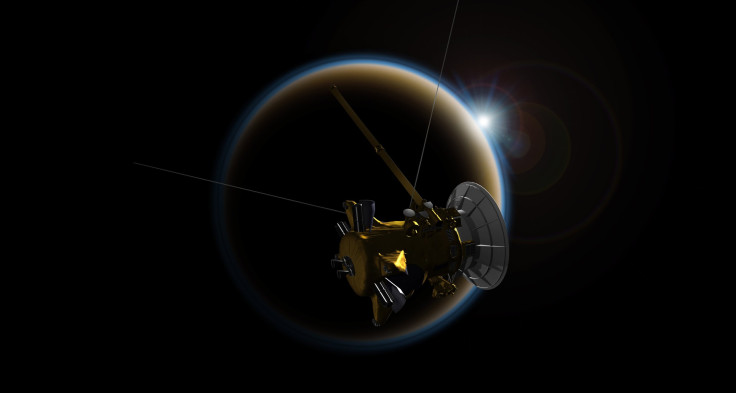NASA Cassini Mission: Saturn's Moon Titan May Support Life

The Cassini mission has been bringing NASA scientists and the public new information about Saturn and its moons for years. Even as the mission nears its end, the spacecraft is sending new findings back to Earth. The latest finding, Saturn’s moon, Titan, might have the building blocks present to support life.
More specifically, the spacecraft found a molecule that is key to creating the building blocks of life in the hazy atmosphere of Titan during a flyby, according to the European Space Agency. Titan’s atmosphere is thick and made of nitrogen and methane, one similar to what some believe Earth’s early atmosphere was like. That means Titan can be used as a sort of lab to understand how chemical reactions led to the Earth we have today and thus how other planets and stars may change to become more Earth like.
Read: 6 Amazing NASA Cassini Images That Illuminate Saturn, Its Moons
Researcher’s understanding of Titan’s atmosphere is changing now that they’ve discovered the specific negatively charged molecule Cassini found at Titan, said the ESA. The molecules took scientists a bit off guard because normally they don’t survive under the circumstances presented by Titan. The molecules are highly reactive and usually combine with other materials fairly quickly
Scientists have identified the molecules as carbon chain anions, which are linear molecules that eventually lead to more complex molecules. The research was published in the Astrophysical Journal Letters and is available for anyone to view online. Cassini also found other molecules but none that offered as much insight as the carbon chain anions.
Read: Life Beyond Earth? NASA Kepler Mission Catalog Of Potentially Habitable Exoplanets Expanded
Such findings were made with Cassini’s plasma spectrometer. It has three separate sensors attached to it that particles can travel into upon approaching the spectrometer. The three sensors are the electron sensor, the ion mass spectrometer and the ion beam sensor. The three measure the kinetic energy and the direction of any particle they interact with but the mass spectrometer also measures mass, according to NASA.
The research also showed that the carbon chain anions were more plentiful in the upper levels of Titan’s atmosphere and the supply depleted as Cassini went close to the surface of the moon. The researchers hypothesize that this decrease could be connected to higher levels of larger aerosol molecules found closer to the surface. Possibly that the chain anions were offering the building blocks for the larger molecules.
The research is so important because it means other moons, stars or planet with similar atmospheres could support similar processes and eventually life.
© Copyright IBTimes 2024. All rights reserved.





















